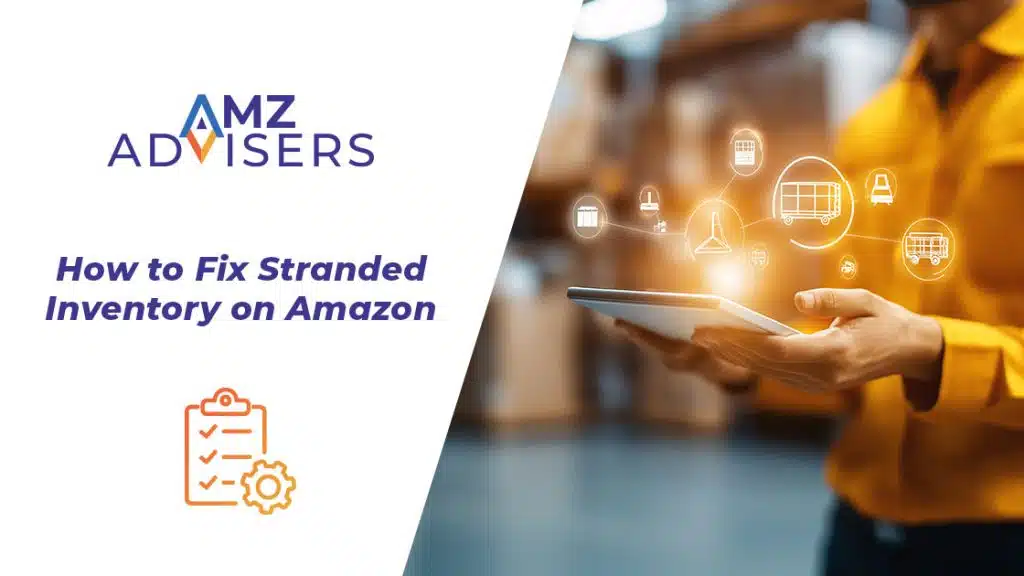Amazon Fresh is one of the biggest players in grocery ecommerce. It offers customers a fast and convenient way to order groceries online, and get them delivered the same day or the next.
For sellers, Fresh is an opportunity to sell food products to millions of Prime members. But getting started isn’t quite simple. Amazon has strict requirements for sellers, and selling groceries online comes with unique challenges.
How Does Amazon Fresh Work for Sellers?
Amazon Fresh is different from the standard marketplace. Not every grocery seller can list products on Amazon Fresh. In fact, Fresh is more exclusive than Amazon Grocery, which is the regular grocery section on the platform.
Anyone approved in the Grocery & Gourmet category can sell. In contrast, Fresh chooses which brands and retailers can sell through the program. So, if you want to sell on Amazon Fresh, you need to prove that your products are a good fit for Amazon.
Getting Approved
You can’t just apply and start selling, since Amazon Fresh is an invite-only program. Amazon selects sellers based on performance, product quality, and ability to meet strict delivery requirements.
Amazon looks for sellers who:
- Have a Professional Seller Account
- Have approval to sell in the Grocery & Gourmet Food category
- Maintain high seller ratings and positive customer reviews
- Offer fast and reliable fulfillment options
- Provide high-quality, properly labeled products
If you meet these criteria, Amazon may reach out to invite you to Fresh. Some sellers also report that contacting Seller Support and expressing interest can help. Also, if you’re already selling on Amazon Grocery, you have a better chance of getting invited.
Listing Your Grocery Products
Once you’re approved, the next step is listing your products. Unlike other Amazon categories, grocery listings must meet strict food safety regulations. Here are some key requirements:
- Accurate product descriptions. Your listings should include detailed ingredient lists, nutritional information, and expiration dates.
- Clear images. High-quality product images with clear labeling help customers know exactly what they’re buying.
- Proper packaging. Amazon requires food products to be sealed and properly labeled. Perishable items must meet strict storage and transport conditions.
Amazon won’t allow products that are close to expiring. If your inventory gets too old, Amazon will remove it from the warehouse, and you may have to pay long-term storage fees.
Fulfillment Options
Amazon Fresh orders are fulfilled differently than standard Amazon Grocery orders. As a seller, you have two main fulfillment options:
1. Fulfillment by Amazon (FBA)
With Amazon FBA, you send your products to Amazon’s fulfillment centers, and they handle storage, packing and delivery. However, FBA comes with extra costs, including:
- Storage fees. Charged monthly based on the amount of space your products take up.
- Fulfillment fees. Charged per order based on size and weight.
- Cold storage fees. Higher costs for refrigerated or frozen products.
Despite the costs, FBA is often the best choice for Amazon Fresh delivery because it ensures that products are stored properly and reach customers quickly.
2. Fulfillment by Merchant (FBM)
With Amazon FBM, you store and ship products yourself. This gives you more control over your inventory, but it also means you’re responsible for fast, reliable deliveries.FBM can work well if you:
- Already have an efficient warehouse and shipping process.
- Sell products that don’t require refrigeration or strict temperature control.
- Avoid Amazon’s FBA storage and fulfillment fees.
Amazon Fresh promises same-day or next-day delivery, so if you choose FBM, you’ll need a strong logistics system to keep up with customer expectations.
Is Amazon Fresh Free for Sellers?
Selling on Amazon Fresh comes with costs, just like selling on the regular marketplace.
Here’s a breakdown of the main fees:
- Referral fees. Amazon takes a percentage of every sale, usually around 8-15% for grocery items.
- FBA fees. You’ll pay for storage, picking, packing, and shipping. Cold storage costs more.
- Amazon Fresh delivery fees. If your products require temperature-controlled delivery, Amazon may charge extra fulfillment fees.
- Long-term storage fees. If your inventory sits for too long, Amazon charges additional storage fees.
The total cost depends on the size, weight, and type of products you sell. Merchants using FBM can forgo FBA fees, but they still have to cover their own shipping and logistics costs.

Why Sell on Amazon Fresh?
Selling on Amazon Fresh offers a big opportunity for grocery sellers. Here’s why:
- Growing online grocery market. More people are shopping for groceries online than ever before. Amazon Fresh gives sellers access to this fast-growing market.
- Repeat customers. Grocery items are bought regularly. If a customer likes your brand, they may reorder every week or month, leading to steady, recurring sales.
- Fast delivery. Customers choose Amazon Fresh because of same-day or next-day delivery. If your products qualify, you can reach more customers who value convenience.
- Less competition. Since Amazon Fresh is invite-only, there are fewer sellers than in the Amazon Grocery category. This gives you a better chance to stand out and build a loyal customer base.
Related content: Whole Foods vs Amazon Fresh
Challenges of Selling on Amazon Fresh
Despite the benefits, there are challenges to selling on Amazon Fresh:
- Strict food safety rules. Amazon has strict requirements for food labeling, storage, and expiration dates. If you don’t meet these, your listings can be removed.
- Big brand competition. Fresh includes products from large grocery brands and Amazon’s private labels. Competing with well-known brands can be tough.
- Pricing pressure. If your prices are too high compared to local grocery stores or other online options, customers may choose a competitor instead.
- Seasonal demand shifts. Grocery sales change based on seasons, holidays, and trends. For example, snacks and drinks sell more in summer, while baking supplies see a boost during the holidays. Managing inventory to match demand is key.
How to Succeed on Amazon Fresh
If you want to succeed as an Amazon Fresh seller, here are some tips:
Pick the Right Products
Some groceries are easier to ship and store than others. Shelf-stable foods like canned goods, pasta, cereal and snacks are great options because they don’t spoil quickly.
Bulk items can be a good option, too. Many shoppers like to buy large packs of snacks or household staples to save money and avoid frequent shopping trips.
Selling fresh foods like dairy, meat, and produce is trickier. These items need to be stored properly, and Amazon has strict rules for handling them.
Create Strong Product Listings
When customers shop online, they can’t touch or smell the food, so they rely on pictures and descriptions. Your photos should be clear and show the product from different angles. Make sure to include packaging details, ingredient lists, and nutrition labels.
Your product description should be easy to read and have all the important details. List the size, weight, ingredients, and any allergens. If your product is organic, gluten-free, or has other special qualities, mention that.
Keep your listings updated, too. If your packaging changes, update your product photos. If ingredients are different, fix your description. Customers expect what they see on the page to match what they receive.
Price Your Products Right
Price is one of the biggest things shoppers look at. If your price is too high, they’ll pick a competitor. If it’s too low, you might not make enough profit. Check your competitors’ prices often so you stay competitive.
Some sellers use Amazon’s dynamic pricing tools, which adjust prices automatically based on demand and competition. Even small price changes can make a big difference in sales.
Keep Your Inventory Under Control
Running out of stock is bad for business. If customers can’t buy your product, they’ll find another seller. On the other hand, stocking too much can lead to extra fees.
Pay attention to sales trends so you know when to reorder. Seasonal items, like holiday snacks or summer drinks, need special planning. Amazon has tools that can help you track demand so you don’t overstock or run out too soon.
Advertise to Get More Sales
Even if you have great products, customers won’t buy them if they don’t see them. Advertising helps get your products in front of more shoppers.
Sponsored Product Ads make your items show up in search results. Sponsored Brand Ads let you promote multiple products at once. Both are great to increase sales.
Coupons and deals are another good strategy. Many shoppers love discounts, and even a small price drop can boost sales. A little ad budget can go a long way in getting your products noticed.
Pay Attention to Customer Reviews
Positive reviews bring in more buyers, while bad reviews can scare them away. If someone leaves a negative review, respond politely and try to fix the problem. A simple apology and a solution can turn an unhappy customer into a repeat buyer.
Encourage happy customers to leave reviews. Many people don’t think to do it unless they are reminded. You can include a thank-you note in your packaging, asking them to share their experience.
If you see the same complaint in multiple reviews, take action. Paying attention to feedback helps you make your business better.
Use Amazon’s Seller Tools
Amazon gives sellers a lot of helpful tools. Seller Central Reports let you track sales and returns. Brand Analytics shows what customers are searching for, helping you decide which products to sell.
Another useful tool is the Inventory Performance Index (IPI), which tracks how well you manage your stock. Keeping your IPI score high helps you avoid storage fees and keeps your products available for Amazon Fresh.
Mistakes to Avoid When Selling on Amazon Fresh
Selling groceries on Amazon comes with challenges. Avoiding these common mistakes can help you stay competitive and profitable.
- Expiration date rules. Amazon has strict expiration date policies. If you send products with short shelf lives, Amazon may remove them from their warehouses. And selling expired products can get you removed from Fresh.
- Poor Product Listings. Customers want to see clear labels, nutritional information, and packaging details before they buy. A lack of detailed descriptions or quality images can lead to poor sales and negative reviews.
- Poor Inventory Management. Overstocking can lead to high storage fees, while understocking can cause stockouts and hurt your seller ranking. Make sure to track demand and restock at the right time.
- Reviews and Feedback. If you get negative reviews, respond quickly and make improvements. Good ratings help you stand out and attract repeat buyers.
Final thoughts
The opportunities for grocery shopping are incredible, and selling on the largest ecommerce platform will help position your brand for success.
Amazon Fresh isn’t for everyone, though. But if you meet the requirements and can manage costs effectively, it can be a profitable way to grow your grocery brand.
Author
 Antonella Fleitas is highly adept at creating fact-based, evergreen content about science, language learning, and culture. Her main goal is to build a strong content foundation for her clients, based on meaningful stories that people can learn from.
Antonella Fleitas is highly adept at creating fact-based, evergreen content about science, language learning, and culture. Her main goal is to build a strong content foundation for her clients, based on meaningful stories that people can learn from.



